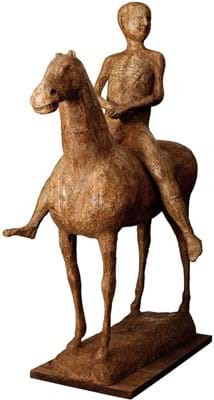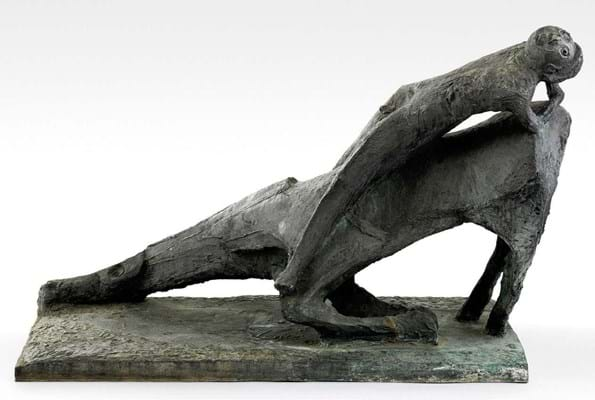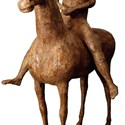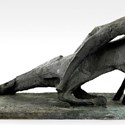For him it was rich with meaning. Ancient and powerful, it provided him with a perfect subject for figurative sculpture in the modern age.
Robilant + Voena’s exhibition Marino Marini: Horses, Horsemen and Female Nudes (February 27-May 18) takes his 1937 plaster cast Gentiluomo a cavallo as a starting point.
Exhibited at the 1948 Venice Biennale, it is one of Marini’s masterpieces, showing an Etruscan-influenced rider on horseback. A grave and majestic group, it is also one of the earliest pieces in the show at the Dover Street gallery.
Over the years, however, Marini’s approach to the form changed. Through his repeated analysis of the cavallo e cavaliere (horse and horsemen) subject, Marini sought to modernise the relationship between man and horse.
His impression of the figures’ connection seems to have been informed partly by his witnessing peasants fleeing bombardment on the backs of terrified horses during the Second World War. Gradually and dramatically, the man in Marini’s works is unseated.
The show tracks this development, including more examples of Marini’s equestrian works, a Piccolo cavaliere (1950) for example. His other sculptural themes are featured too, such as his female nudes. Works in bronze and plaster range in price from around £500,000-3m.
It is curated by Barbara Cinelli and Flavio Fergonzi of the Marino Marini Foundation.
Last year, they held the first retrospective of Marini in Pistoia, the artist’s hometown, before it moved to the Peggy Guggenheim Collection, where it runs until May 1.


















